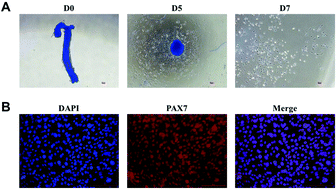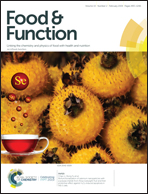Lysine-induced swine satellite cell migration is mediated by the FAK pathway†
Abstract
Lysine (Lys) is an essential amino acid for mammals in promoting protein synthesis and skeletal muscle growth. However, the underlying mechanism by which Lys governs muscle growth remains unknown. Lys is not only a material for protein synthesis but also a signaling molecule. Cell migration is a fundamental process for satellite cells (SCs) to promote muscle fiber hypertrophy and thus increase muscle mass. Nevertheless, the communication between Lys and SC has not yet attracted sufficient attention. In this study, we investigated whether Lys directly stimulates SC migration and whether this effect is mediated via the focal adhesion kinase (FAK) pathway. The results of a cell wound-healing assay and transwell assays indicated a significant inhibition of migration ability by Lys deficiency. In addition, the phosphorylation of FAK, paxillin and protein kinase B (Akt) was significantly suppressed, as were the level of integrin β3. Fortunately, we found that increasing Lys levels from deficiency to sufficiency rescued the migration ability to the control level. Moreover, compared with those in the Lys-deficiency group, the proteins in the FAK pathways were reactivated in the Lys-resupplementation group. In conclusion, these findings indicate that the FAK pathway mediates Lys-induced SC migration.



 Please wait while we load your content...
Please wait while we load your content...